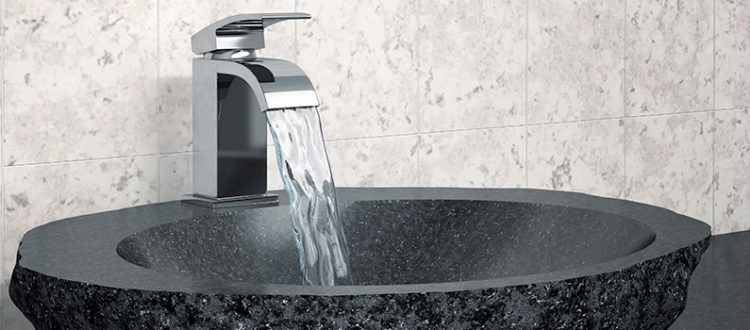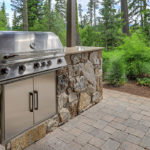How to Clean a Stone Sink
How to Clean Your Natural Stone Sink
Stone is a naturally porous material that tends to soak up water or other liquids around it. In fact, limestone can be up to 31% porous when found in nature! Of course, we at Impression don’t use limestone or any stone quite this porous, as it certainly wouldn’t hold up all too well. Nearly all stone used for home projects falls under 5% porosity, with a majority under 2%. Even with this substantially lower number, those pores need to be treated in order to preserve the lifespan of your stone sink. Being porous, stone tends to absorb any liquids around it. When your sink is made up of natural stone, this means that all of the harsh chemicals, hard water, and beauty products can end up in the stone’s pores as well if left unmaintained or unsealed.
Daily Maintenance and Care
After using your sink, always be sure to give it a quick rinse with plain water. This will help prevent the build-up of any residues left behind from things like toothpaste, makeup, or face washes. You don’t want these to be left to seep into the stone or etch its surface! If you live in an area with hard water, you’ll want to dry your stone sink after each use. This may sound tedious, but the minerals in the water can greatly shorten the lifespan of your stone sink. It’s necessary, and will help your stone fixtures last a lifetime.
You should also periodically wipe down the stone with mild soap and warm water. Your soap should be specific to the type of stone your sink is made of. Don’t ever use abrasive cleansers or anything with an acidic pH (vinegar, citrus cleaners, etc.), as they can scratch the surface and leave irreparable damage. Rinse with clean warm water afterwards, but try not to use too much. Dry it using a clean, soft cloth. Be sure not to leave any standing water behind, as it can leave water stains.
Seal Stone on a Regular Basis
Some homeowners may get a little tripped up on when it’s time to reapply a stone-appropriate sealant. The common answer is “as needed,” which isn’t particularly helpful. Try applying the water beading test to see if it’s time instead. To run this test, place a small amount of water on your stone. If the water beads up on the surface, it’s not quite time to reseal. If the water immediately soaks into the stone, it’s time for more sealant. If water can seep into the stone, just imagine all of the other liquids filled with harsher chemicals that can too. Generally speaking, you’ll end up resealing your stone about every year or so, but it will be more frequently if you have a larger household.
Stone Sinks From Impression
Make sure you provide this information to everyone who will be cleaning your home, whether it be teaching your children for when they do chores or informing a house cleaning professional before they use abrasive cleaning materials. With the proper measures taken, you’ll be enjoying your natural stone sink for years to come! Don’t have a stone sink yet? Don’t miss out! Contact our team of artisans and experts at Impression today to get started on your stone sink or other stone home feature.
















